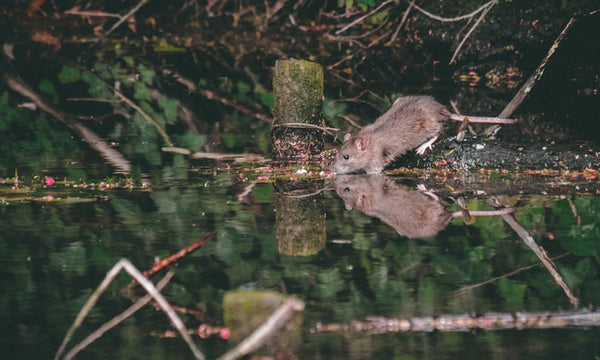
We've been battling against rats and mice since their introduction to New Zealand in the 1800s, so you'd think we'd know how to solve a rodent problem, right?
Unfortunately, human error makes trapping rats and mice more complicated than it needs to be.
In our experience, you'll solve your rodent problem faster by understanding these common mistakes. In this article, we’ll help you win the battle against your rats and mice by explaining how to avoid these common traps (see what we did there?).
Your traps aren't ready and waiting
Constant control should be your goal when catching rodents, but this is nearly impossible to achieve with one or two single set mouse traps. When rats and mice come calling, traps are often unavailable as they need to be emptied or reset, which leads to lower levels of success. When a rat or mouse chooses to interact with your traps, the trap needs to be ready.
You don't have enough traps
You need to lay more traps than you'd first think. Mice produce a new litter of up to 15 mice every month, and it only takes six weeks for those mice to begin breeding themselves. Rats produce a new litter of up to 22 rats around eight times a year, and it only takes females five weeks to begin breeding. Increasing the number of mouse traps and rat traps available enables you to reduce the population more quickly than it can grow. It also reduces the frequency you need to empty and reset them.
Set three single fire traps for each rodent on your property. So if you had three roaming your home, you’d need to place approximately 9 mouse traps to really get on top of them. That’s a lot of traps. Most people aren’t using this many, and so their problems persist.
Your traps are in the wrong place
Rats and mice are known as neophobic - a fear anything new or unfamiliar. They’re super cautious of anything new in their environment (like traps). So it’s best to set traps where rats and mice feel safest to reduce these feelings and increase the likelihood of them investigating your trap.
A recent study explored this behavior. Researchers wanted to see how mice would respond to a new object in their enclosure (a small plastic horse). They compared the reaction of lab mice, which were familiar with the object, to wild mice which weren't. They found that wild mice were more hesitant in their first approach to it and made contact with it less often than the laboratory mice. Feelings of neophobia decreased as approaches to the object increased.
So what does this mean for trapping?
Rats and mice may initially avoid traps new to their environment. We can offset this by placing the traps where they feel safest.
Neophobia shows up as avoidance of new objects and a preference to travel by cover - sticking close to walls, fences, and bushes. You might have noticed this with rats and mice around your place.
Wide, open areas and thoroughfares are not safe zones for rodents. Rather than placing traps where you’ve seen your rats and mice, place them under well-covered areas, where mice feel safe.
If your rodent problem is in your ceiling space, start by placing traps along the walls, in corners, and behind rafters. In living areas of your home, place traps in kitchen cabinets, behind appliances, and the edges of each room. If your rodents are most active outdoors, place traps near bushes and fence lines, along the walls of your deck, and, if you have a pool, near your filter pump. Remember, neophobia reduces over time as rodents become familiar with the traps in their environment, so be patient and give it time. You've increased your chances of success by placing traps in ideal places.
You are using an ineffective bait
While your rats and mice familiarise themselves with your traps, it’s easy to attribute a lack of early success to the bait being used. Firstly, consider how long your traps have been active. Secondly, consider the lure you're using. Is it still fresh?
Like people, rats and mice prefer food that’s fresh. Consider a piece of cheese. As it ages, it dries and shrivels. Its attractiveness reduces exponentially over a few days and is lost easily in the myriad of scents vying for your rodents' attention. Consider using a long-life lure, or replacing your bait every few days. The ideal solution is a bait that keeps itself fresh for long periods.
A more effective approach
Traditional snap traps are old technology and don’t help solve the challenges outlined here. Solving your rodent problem needs a new approach.
Self-resetting traps, such as our Goodnature® A24 Rat & Mouse Trap, do solve these potential problems.
The A24 Trap automatically resets itself after every CO2-powered shot. Each CO2 canister fires the trap’s piston 24 times, eradicating 24 rats or mice without the need to check the trap, re-bait it, or reset it between strikes. What happens to the dead pests, you ask? Set outside the majority of dead mice are scavenged by other rats, cats or birds of prey. However, when set inside, dead rats and mice should be removed every few days.
The lure inside the A24 Trap is designed to attract rats and mice. It's chocolate-based and remains attractive for six months thanks to a system called the automatic lure pump - ALP for short. The ALP dispenses fresh chocolate lure over six months keeping the trap attractive to pests with fresh lure. The chocolate lure is also 100% toxin free. There is also a nut butter formula for the A24.
Finally, the A24 is a quick-kill trap, which means the A24 Trap kills rats instantly.
Happy trapping!
Sources
https://www.ncbi.nlm.nih.gov/pmc/articles/PMC4890768
https://ink.springer.com/article/10.3758/BF03331280
